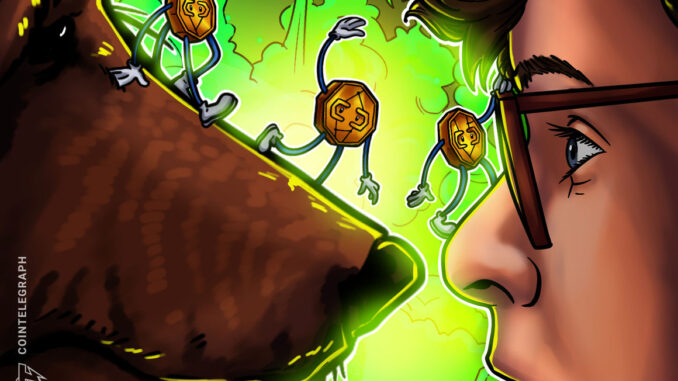
The 2022 cryptocurrency bear market has been the worst on record as most Bitcoin traders are underwater and continue to sell at a loss. In response to the rapid decline of token prices, some investors have fled to safe-haven assets; some have exited the market completely and others have perplexingly turned to the enigmatic market of crypto derivatives.
With regards to this, Cointelegraph spoke to BingX’s brand lead Emerson Li. BingX is a Singaporean social-based cryptocurrency exchange known for its leaderboards where users can compete with others for returns on investments as well as share ideas among their followers. The exchange processed around $319 million in trading volume within the past 24 hours, mainly consisting of derivates. Regarding the recent market downturn, here’s what Li had to say:
“BingX’s users are also proliferating; compared with Q1 2022, Users number increased by 70% in the second quarter, and transaction volumes doubling since this round of slumps. We believe that its demand for derivatives is still increasing because it allows users to profit from falling prices, a feature that other products do not have.”
During bear markets, traders can purchase derivatives known as put options to either hedge their positions or speculate that the value of underlying tokens will fall. While this can be done by simply shorting the coin, violent and periodic bear market rallies can lead to theoretically infinite losses on one’s short position. In addition, a lack of liquidity for borrowing coins to short may lead to exchanges charging high-interest rates on one’s positions. On the other hand, the put buyer’s losses are theoretically limited to the premium they paid for the derivative, and there are no additional interest fees.
Li went on to explain that BingX is also seeing a sharp increase in deposits as of late. “Since high market volatility is suitable for the derivatives market, we see more users participating in such transactions and stimulating more demand for deposits.”
Money also appears to be flowing back to CeFi products from DeFi protocols. “For high-risk products such as DeFi staking, we believe traders have panicked under the recent market, affected by the Terra (LUNA) — since renamed Terra Classic (LUNC) — affair and the problems with many DeFi protocols. Users’ risk appetite has decreased, and demand has declined,” said Li.
Indeed, dYdX, a decentralized crypto exchange known for its margin and perpetual contract products, saw its weekly trading volume fall approximately 90% from the $12.5 billion witnessed from Oct 24 to Oct 30 last year. However, the trading volume is still several magnitudes higher than one year ago, partly due to the aforementioned risk-hedging tailwind.
Risk-wise, it would appear that the worst is over as a spike in liquidations on dYdX, mainly in the Ethereum and Bitcoin markets, has dissipated since mid-June. Experts from Glassnode noted tokens held in wallet addresses by both new investors and crypto whales had been increasing meaningfully amid the sell-off.






Be the first to comment